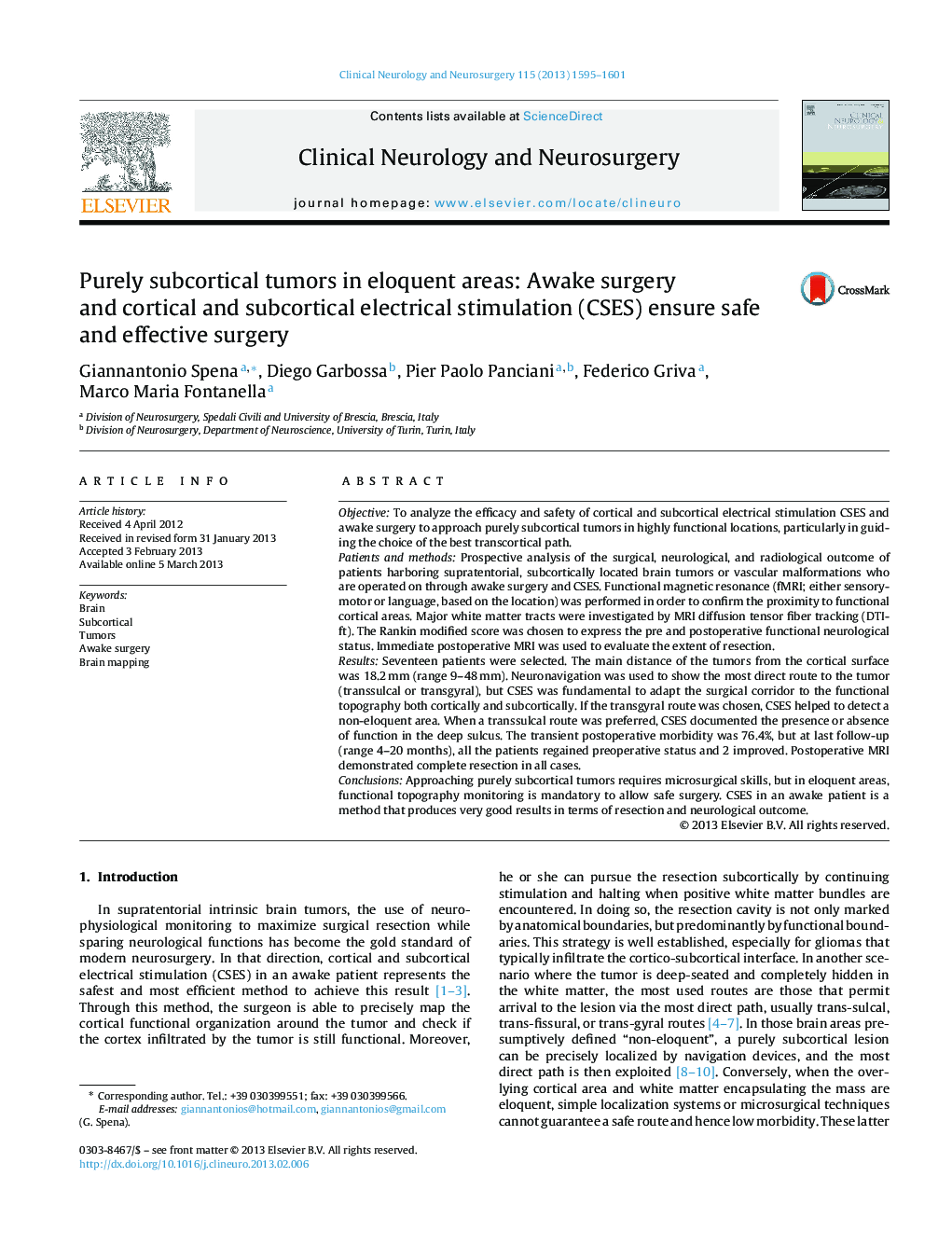| Article ID | Journal | Published Year | Pages | File Type |
|---|---|---|---|---|
| 3040467 | Clinical Neurology and Neurosurgery | 2013 | 7 Pages |
ObjectiveTo analyze the efficacy and safety of cortical and subcortical electrical stimulation CSES and awake surgery to approach purely subcortical tumors in highly functional locations, particularly in guiding the choice of the best transcortical path.Patients and methodsProspective analysis of the surgical, neurological, and radiological outcome of patients harboring supratentorial, subcortically located brain tumors or vascular malformations who are operated on through awake surgery and CSES. Functional magnetic resonance (fMRI; either sensory-motor or language, based on the location) was performed in order to confirm the proximity to functional cortical areas. Major white matter tracts were investigated by MRI diffusion tensor fiber tracking (DTI-ft). The Rankin modified score was chosen to express the pre and postoperative functional neurological status. Immediate postoperative MRI was used to evaluate the extent of resection.ResultsSeventeen patients were selected. The main distance of the tumors from the cortical surface was 18.2 mm (range 9–48 mm). Neuronavigation was used to show the most direct route to the tumor (transsulcal or transgyral), but CSES was fundamental to adapt the surgical corridor to the functional topography both cortically and subcortically. If the transgyral route was chosen, CSES helped to detect a non-eloquent area. When a transsulcal route was preferred, CSES documented the presence or absence of function in the deep sulcus. The transient postoperative morbidity was 76.4%, but at last follow-up (range 4–20 months), all the patients regained preoperative status and 2 improved. Postoperative MRI demonstrated complete resection in all cases.ConclusionsApproaching purely subcortical tumors requires microsurgical skills, but in eloquent areas, functional topography monitoring is mandatory to allow safe surgery. CSES in an awake patient is a method that produces very good results in terms of resection and neurological outcome.
